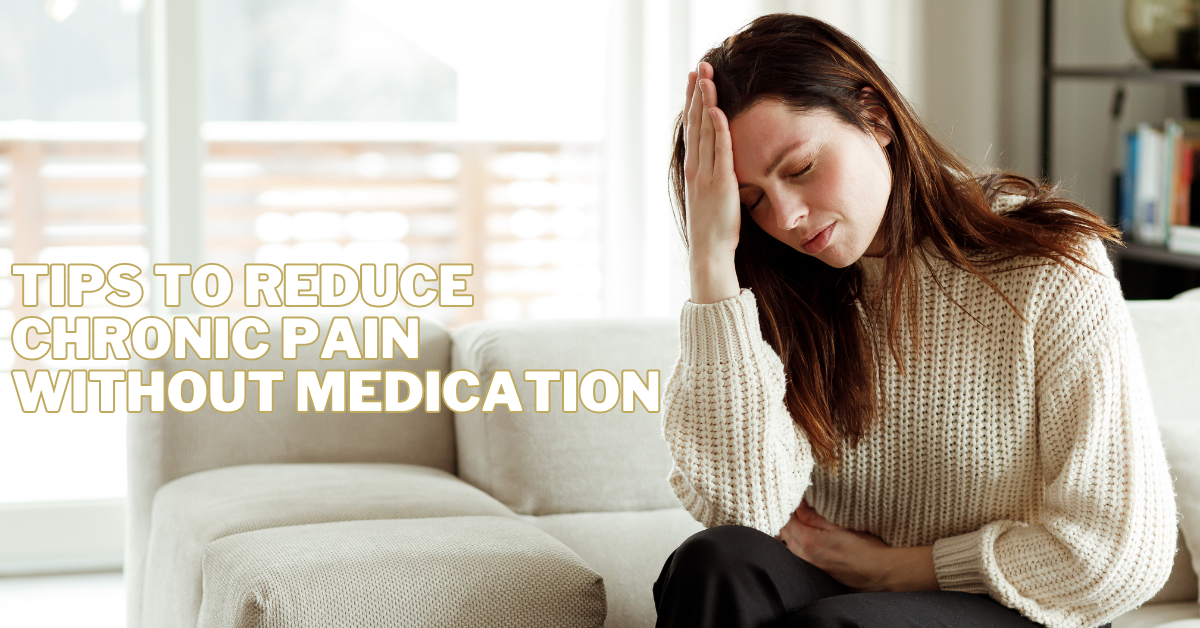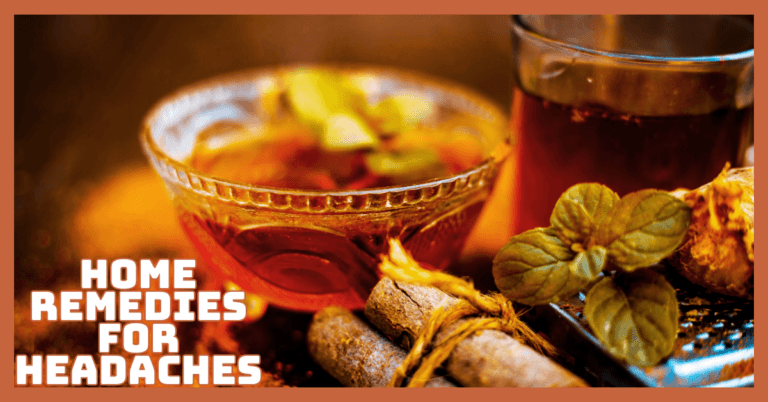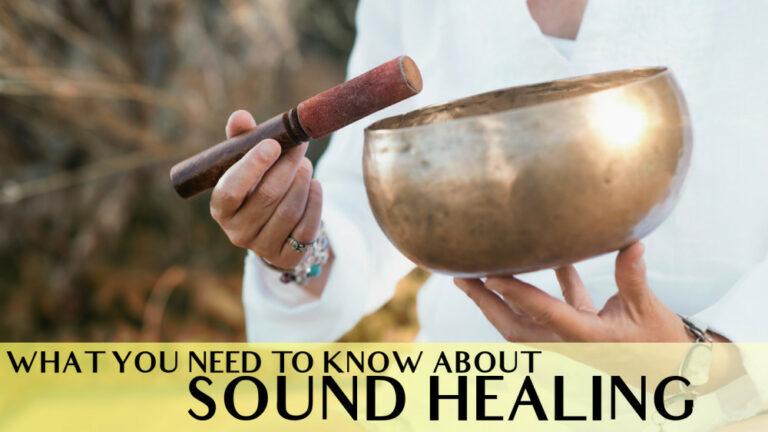Best Tips To Reduce Chronic Pain Without Medication

Best Tips To Reduce Chronic Pain Without Medication
Chronic pain can be incredibly challenging, affecting every aspect of daily life. While medication can relieve many individuals, some may seek alternative approaches to manage their pain.
Fortunately, there are non-medication strategies that can help alleviate chronic pain and improve overall well-being.
This article will explore effective tips and techniques to reduce chronic pain without relying solely on medication.
From lifestyle adjustments to holistic therapies, we will delve into various approaches that can empower individuals to take an active role in their pain management.
By implementing these strategies, individuals with chronic pain can discover new avenues of relief, enhance their quality of life, and regain control over their well-being.
What Is Chronic Pain?
Chronic pain is a complex and multifaceted medical condition involving physical and psychological components. It can result from various underlying causes, making diagnosis and treatment challenging.
Common chronic pain conditions include fibromyalgia, osteoarthritis, rheumatoid arthritis, chronic back pain, migraines, neuropathic pain, and inflammatory diseases.
The pain experienced in chronic pain conditions is often not proportional to the original injury or cause.
The nervous system can become hypersensitive, amplifying pain signals and causing even minor stimuli to trigger intense discomfort.
This phenomenon is known as central sensitization and contributes to the persistence of pain.
The impact of chronic pain extends beyond physical suffering, affecting mental health, sleep patterns, and overall well-being.
Many individuals with chronic pain experience anxiety, depression, fatigue, and reduced mobility, worsening the pain and creating a vicious cycle.
Treatment for chronic pain usually involves a multidisciplinary approach, combining medical interventions, physical therapy, psychological counselling, and lifestyle changes.
Medications, such as analgesics, anti-inflammatory drugs, and antidepressants, may be prescribed to manage pain and associated symptoms.
Physical therapy and exercise can help improve flexibility and strength and reduce pain. Additionally, cognitive-behavioural therapy and other psychological interventions can assist individuals in coping with pain and addressing any emotional distress.
It's crucial for people experiencing chronic pain to work closely with healthcare professionals to develop a personalized pain management plan.
While complete elimination of pain may not always be achievable, improving function, reducing pain intensity, and enhancing the overall quality of life are essential goals in managing chronic pain effectively.
Tips To Reduce Chronic Pain Without Medication
Imagine a life where chronic pain doesn't dictate your every move, where you can find relief and regain control without relying solely on medication.
Living with chronic pain can be incredibly challenging, but there are alternative approaches that can help alleviate discomfort and improve your overall well-being.
Reducing chronic pain without relying solely on medication is possible through various strategies. Here are some detailed tips to help manage chronic pain naturally:
1. Physical Activity
Regular physical activity is a valuable non-medication approach for managing chronic pain. Engaging in activities tailored to your abilities and condition can provide numerous benefits.
Low-impact exercises like walking, swimming, or yoga suit individuals with chronic pain.
Walking is a simple and accessible activity that helps increase cardiovascular fitness, promote circulation, and improve joint mobility.
Swimming is gentle on the joints, offering a weightless environment that reduces impact while enhancing muscle strength and flexibility.
Yoga combines gentle movements, stretching, and mindfulness, promoting relaxation, improved posture, and increased body awareness.
These low-impact exercises help strengthen muscles, support and stabilize joints, alleviate pain, and improve overall physical function.
It's essential to start slowly, listen to your body, and gradually increase intensity and duration over time. Speak with a healthcare expert or physical therapist to create an exercise program tailored to your requirements and condition.
2. Heat And Cold Therapy
Heat and cold therapy are effective non-medication methods for reducing chronic pain. The affected area can benefit from applying heat to relax muscles, enhance blood flow, and reduce pain.
Heat therapy can be administered through hot packs, warm towels, baths, or heating pads. The warmth increases flexibility, promotes healing, and provides a soothing sensation.
On the other hand, cold therapy, also known as cryotherapy, involves applying cold packs, ice packs, or ice baths to the affected area.
Cold therapy helps reduce inflammation, numb the area, and relieve temporary pain. It can be particularly beneficial for acute injuries or conditions of swelling or inflammation.
It's important to use heat or cold therapy as directed by healthcare professionals, following appropriate duration and frequency guidelines.
Some individuals may find alternating between heat and cold treatment beneficial, while others may prefer one. Experimenting with both methods can help determine which works best for you and provides optimal pain relief.
3. Mind-Body Techniques
These are powerful tools for managing chronic pain without medication. Deep breathing, meditation, and mindfulness practices can promote relaxation, reduce stress, and provide a sense of control over pain.
Deep breathing exercises involve slow, deep breaths that activate the body's relaxation response, calming the nervous system and reducing tension.
Meditation cultivates a state of focused attention, allowing you to observe and accept sensations without judgment. This helps shift your relationship with pain and develop a greater sense of resilience.
Mindfulness involves bringing awareness to the present moment, noticing sensations, thoughts, and emotions without getting caught up in them.
Practicing these techniques regularly can cultivate a calm and centred state of mind, positively influencing your pain perception.
Incorporating mind-body techniques into your daily routine, even for just a few minutes, can make a significant difference in managing chronic pain and enhancing overall well-being.
Explore different styles and find what works best for you, whether guided meditations, breathing exercises, or mindfulness practices.
4. Massage And Bodywork
Massage and bodywork therapies offer valuable options for managing chronic pain without medication. Therapeutic massage involves the manipulation of soft tissues, targeting areas of muscle tension and discomfort.
It can help reduce muscle tightness, release trigger points, improve circulation, and promote relaxation. In contrast, acupuncture encourages energy flow and restores balance by inserting tiny needles into precise bodily locations.
It has been demonstrated that using this approach can assist in reducing pain and inflammation while enhancing mental and physical health.
Chiropractic care aligns the spine and musculoskeletal system to promote joint function, relieve pain, and improve general body movement.
These modalities can provide temporary pain relief and complement other pain management strategies.
When considering massage or bodywork therapies, consulting with qualified, licensed practitioners with experience working with individuals with chronic pain is essential.
They can tailor their techniques to your specific needs, ensuring a safe and effective approach to pain management.
5. Stress Reduction
Incorporating stress reduction techniques into your routine is crucial for managing chronic pain without relying solely on medication.
Chronic pain and stress often have a reciprocal relationship, where stress can exacerbate pain perception and contribute to increased stress levels.
It can assist in focusing your attention away from discomfort and encourage relaxation to engage in interests or activities that make you happy and feel fulfilled.
Deep breathing, gradual muscle relaxation, and guided visualization are all examples of relaxation techniques that can help quiet the nervous system and lessen stress.
You can express your feelings and concerns, gain perspective, and create coping mechanisms by seeking emotional assistance through counselling or support groups.
You can also develop a non-judgmental awareness of your thoughts and emotions by engaging in mindfulness practices and mindfulness-based stress reduction strategies, improving how you handle stress and pain.
Effective stress management can reduce pain perception and improve general well-being.
6. Sleep Optimization
Sleep optimization is important in managing chronic pain without medication. A regular sleep schedule helps regulate your body's internal clock and improves sleep quality.
Aim for consistent bedtimes and wake-up times, even on weekends, to support a healthy sleep-wake cycle.
A sleep-friendly environment ensures your bedroom is cool, dark, and quiet. Consider using earplugs, eye masks, or white noise machines to minimize disturbances disrupting sleep.
Additionally, invest in a comfortable mattress, pillows, and bedding that adequately support your body. Quality sleep is essential for pain management, allowing your body to heal and regenerate.
During sleep, the brain releases endorphins, which are natural pain-relieving hormones. Adequate sleep also helps reduce pain sensitivity, making coping with chronic pain during the day easier.
If sleep disturbances persist, consult a healthcare professional who can guide you and suggest appropriate strategies to improve your sleep quality.
7. Healthy Diet
Maintaining a healthy diet is fundamental to managing chronic pain without medication. A well-balanced diet can provide essential nutrients and support overall well-being.
Concentrate on including a range of fresh produce, healthy grains, lean meats, and other food groups in your meals.
These foods are a good source of fiber, antioxidants, vitamins, and minerals, supporting the immune system, lessening inflammation, and speeding healing.
Avoid processed foods, which often contain additives and preservatives that can trigger inflammation and exacerbate pain. Excessive sugar consumption can also contribute to inflammation, so limit your sugary snacks, desserts, and beverages intake.
Additionally, alcohol consumption can interfere with sleep quality and may interact with certain medications, impacting pain management.
Staying hydrated is important, so aim to drink an adequate amount of water throughout the day.
It's advisable to consult with a healthcare professional or registered dietitian who can provide personalized dietary recommendations based on your specific condition and needs.
8. Acupuncture
Acupuncture is a time-honoured practice that can be beneficial for managing chronic pain without medication.
It entails inserting tiny needles into predetermined bodily locations to stimulate the acupuncture points and aid in healing and restoring balance.
It is thought that acupuncture works by triggering the body's own processes for pain relief, such as the release of endorphins, which act as natural painkillers.
By targeting specific points along energy pathways known as meridians, acupuncture aims to restore the flow of energy and address imbalances that may contribute to pain and discomfort.
Acupuncture sessions are typically tailored to the individual's condition and may involve a combination of local and distal points.
The treatment is generally safe when a licensed acupuncturist uses sterile needles. It can provide pain relief and a sense of overall well-being, relaxation, and improved energy flow.
It's important to consult a qualified practitioner to discuss your condition and determine if acupuncture suits your pain management.
9. TENS Therapy
A non-drug strategy called transcutaneous electrical nerve stimulation (TENS) may help treat chronic pain.
A small battery-operated device known as TENS therapy transmits low-level electrical impulses to the skin through electrode pads placed on the affected area.
The nerves are stimulated by these electrical impulses, which temporarily reduce pain by preventing the brain from receiving pain signals.
Depending on the demands and preferences of each person, the electrical impulses' frequency and intensity can be changed.
TENS therapy works by activating the body's pain-regulating mechanisms, such as releasing endorphins, which are natural painkillers.
It is a safe and non-invasive technique that can be easily used at home with proper guidance.
However, it's important to consult with a healthcare professional or physical therapist to receive good instructions on using a TENS device effectively and ensure its suitability for your specific condition.
10. Cognitive Distraction
Cognitive distraction is a technique that can help manage chronic pain by redirecting attention away from the pain signals.
Engaging in activities that require mental focus and concentration, such as puzzles, reading, or learning a new skill, can help shift your attention and relieve pain.
When absorbed in a challenging task, your mind becomes less focused on pain sensations. Puzzles, such as crosswords or Sudoku, can engage your cognitive abilities and divert your attention.
Reading can transport you to different worlds and immerse you in a captivating narrative, temporarily distancing you from the experience of pain.
Learning a new skill, whether playing a musical instrument, painting, or cooking, can provide a sense of accomplishment and purpose, promoting a positive mindset.
By engaging in cognitive distraction activities, you may experience a reduction in pain perception and improve overall well-being.
Find activities that you enjoy and that capture your attention, allowing you to immerse yourself and experience the benefits of cognitive distraction.
11. Hydrotherapy
Hydrotherapy is a therapeutic approach that utilizes water to manage chronic pain and promote overall well-being. It encompasses various techniques, such as warm water baths, swimming, and aerobics.
The buoyancy of water reduces the effect of gravity, relieving pressure on joints and allowing for gentle movement with reduced impact.
Warm baths can help relax muscles, ease tension, and promote circulation. The warmth of the water can provide soothing relief for chronic pain, particularly in conditions like arthritis or fibromyalgia.
Swimming or water aerobics provide a low-impact form of exercise that can improve cardiovascular fitness, strength, and flexibility.
Water resistance adds gentle resistance to movements, helping build muscle strength without placing excessive strain on the joints.
Hydrotherapy can also enhance the range of motion, improve balance, and promote relaxation.
It's important to consult with a healthcare professional or a certified aquatic therapist to determine the appropriate hydrotherapy techniques and exercises for your specific condition.
They can guide you in creating a safe and effective hydrotherapy routine tailored to your needs, helping you find relief and improve your overall physical function.
12. Herbal Remedies
Herbal medicines have been utilized for a very long time as all-natural solutions to treat chronic pain. The potential pain-relieving abilities of some plants, including turmeric, ginger, devil's claw, and white willow bark, are well known.
Curcumin, an anti-inflammatory compound found in turmeric, may help lessen pain brought on by illnesses like arthritis.
- Ginger also possesses anti-inflammatory properties and may relieve muscle and joint pain.
- Devil's Claw is believed to have analgesic and anti-inflammatory properties and has been traditionally used for treating conditions like osteoarthritis and back pain.
- Salicin, a substance found in white willow bark comparable to aspirin, may treat pain, particularly musculoskeletal or headache discomfort.
Remembering that herbal medicines can interact with prescription drugs or may not be appropriate for everyone.
Consulting with a healthcare professional or herbalist is essential to determine the proper herbs for your specific condition and to ensure safe usage.
They can guide the proper dosages, potential side effects, and possible interactions with your current medications.
Conclusion
In conclusion, managing chronic pain without relying solely on medication is a multi-faceted journey that requires a holistic approach.
By incorporating non-medication strategies into your pain management routine, you can actively empower yourself to reduce pain and improve your overall well-being.
Whether engaging in physical activity, practicing relaxation techniques, exploring alternative therapies, adopting a healthy lifestyle, or seeking emotional support, each tip contributes to a comprehensive toolkit for pain relief.
Remember, every individual is unique, and finding the right strategies may require trial and error.
By embracing these tips, you can discover what works best for you, regain control over your pain, and live a more fulfilling life.
Embrace the power of natural alternatives, listen to your body's needs, and embark on a path of self-care and resilience. Together, we can navigate the complexities of chronic pain and unlock the potential for a brighter, pain-free future.
I trust you enjoyed this article on the Best Tips To Reduce Chronic Pain Without Medication. Please stay tuned for more blog posts shortly. Take care!
JeannetteZ
>>>Please click here to read my all-inclusive article about Lessons That Will Teach You All About Stress<<<
>>>Are you interested in Natural Healing And Stress Relief through Herbs? Please click here for my #1 Recommendation<<<
Your Opinion Is Important To Me
Thoughts? Ideas? Questions? I would love to hear from you. Please leave your questions, experience, and remarks about the Best Tips To Reduce Chronic Pain Without Medication article in the comments below. You can also reach me by email at Jeannette@Close-To-Nature.org.
Disclosure
This post may contain affiliate links. As an Amazon Associate and other affiliate programs, I earn from qualifying purchases at no extra cost to you. Please read my full affiliate disclosure.
You might also enjoy these blog posts:
Best Tips For Managing Anxiety Before Surgery
Interesting Wildlife Species: Unravel The Secrets Of The Animal Kingdom
Best Ways Massage Can Benefit Health
Best Ways To Create A Bird-Friendly Garden




















